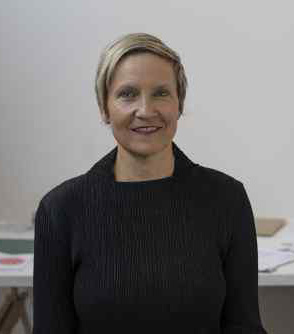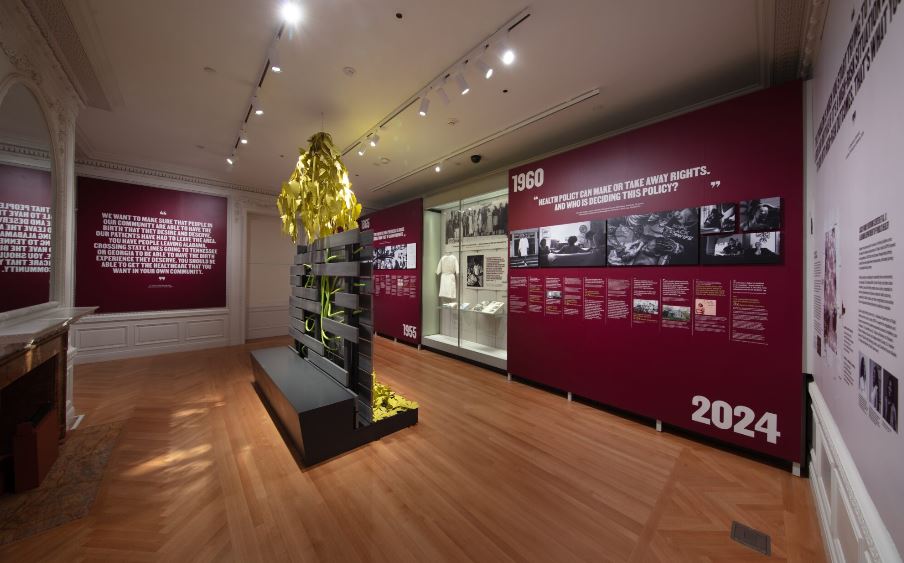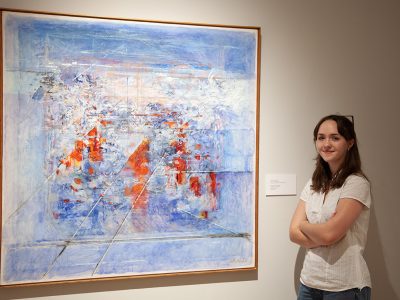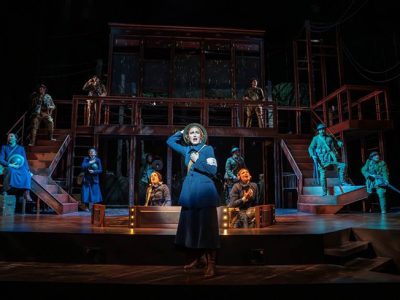Architecture Professor Featured in Cooper Hewitt Triennial
A Syracuse University professor in the School of Architecture is a featured architect in the exhibition “Making Home—Smithsonian Design Triennial” at the Cooper Hewitt, Smithsonian Design Museum, in New York City.

Distinguished Professor Lori Brown and her collaborators, Trish Cafferky and Dr. Yashica Robinson, are included in this year’s Design Triennial with their installation “Birthing in Alabama: Designing Spaces for Reproduction.
The work is one of 25 site-specific, newly commissioned installations at Cooper Hewitt, Smithsonian Design Museum, home to the exhibition “Making Home—Smithsonian Design Triennial.” The exhibition explores design’s role in shaping the physical and emotional realities of home across the U.S., U.S. territories and tribal nations.
The installation, featuring Brown’s work, centers on the efforts of obstetrician-gynecologist Dr. Robinson to create a new and expanded network of home health care services and alternatives to hospital births. This work reveals ongoing inequities in the state—resulting from economics, racial injustice, public policy and distance from health care facilities.
“Birthing in Alabama: Design of Reproduction” extends two decades of research, advocacy and activism focusing on reproductive health care by Brown. The installation provides a platform to question where and how architecture contributes to a wide and diverse public and to examine questions of how law and policy shape spaces of birthing access across geographic boundaries and spatial conditions.
For “Birthing in Alabama,” Brown and a team of architectural researchers mapped the legacy of laws and building and zoning codes to contextualize these challenges and present designed alternatives to alleviate their impact.

The installation shows the complicated history of maternity care and access from 1865-2024 and the high rates of maternal mortality for pregnant Black women during this time period. It includes excerpts from Brown’s interviews, bringing the voices of those on the frontline working to expand birthing access across Alabama into the gallery experience.
Brown is an internationally recognized scholar and educator whose research focuses on the relationships between architecture, social justice and gender. She is the co-founder of ArchiteXX, a nonprofit dedicated to gender equity in architecture.
Brown’s research has focused on the physical structures of abortion clinics and how the debate has shaped access to reproductive health care. She is the author of “Contested Spaces: Abortion Clinics, Women’s Shelters and Hospitals: Politicizing the Female Body,” and many articles including “Private Choices, Public Spaces. Field notes from Mississippi’s last remaining abortion clinic” that discusses the call for design ideas for what was the sole remaining abortion clinic in Mississippi.
The exhibition is on view now until the summer of 2025 and is installed throughout the Andrew and Louise Carnegie Museum. Each floor is organized on themes of home: “Going Home,” “Seeking Home” and “Building Home.”
“Going Home” examines how people shape and are shaped by domestic spaces; “Seeking Home” addresses a range of institutional, experimental and utopian contexts that challenge conventional definitions of home; and “Building Home” presents alternatives to the single-family concept of home.
Brown and her co-collaborators are featured in the “Seeking Home” section. Installation of the exhibition was supported by the New York Council on the Arts and additional support from the Syracuse University Office of Academic Affairs; Office of Undergraduate Research and Creative Engagement and the School of Architecture.


